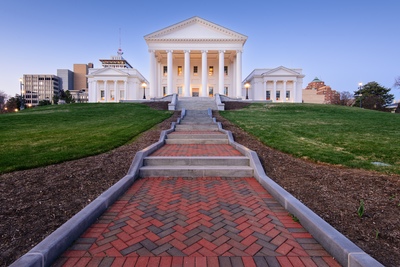
State Government Affairs, Elections & Campaigns
How Lieutenant Governors Are Selected (And Why It Matters)
December 10, 2025 | Bill Kramer
August 18, 2023 | Sandy Dornsife

Key Takeaways:
As we discussed in a recent article, the U.S. Supreme Court’s decision in Alabama’s Allen v. Milligan surprised many legal experts when it affirmed Section 2 Voting Rights Act protections. Whether this represents a new trend, however, will soon be tested when the Court hears Alexander v. South Carolina State Conference of the NAACP this Fall. In this case, Appellees argue that South Carolina’s congressional district maps violate the U.S. Constitution’s Equal Protection Clause of the 14th Amendment.
The impact of this decision could be far-reaching, and with the 2024 election season fast approaching, the clock is ticking for interested parties to make their case in time. According to the American Redistricting Project, thirteen other states have active litigation regarding their congressional or state legislative maps that echoes these claims, including Alabama, Arkansas, Florida, Georgia, Mississippi, Michigan, North Dakota, Ohio, Texas, and Washington.

The 14th Amendment’s Equal Protection Clause prohibits a state from making or enforcing any law that denies “to any person within its jurisdiction the equal protection of the laws.” What parties challenging state redistricting plans are alleging is that the new maps violate this clause through the use of racial gerrymandering, or the drawing of districts to favor the members of certain races. The Supreme Court has consistently held that racial gerrymandering violates the Equal Protection Clause since its 1993 decision in Shaw v. Reno.
While the Equal Protection Clause’s voting protections seem straightforward, the U.S. Supreme Court’s 2019 decision in Rucho v. Common Cause has created a much more complicated legal landscape. In Rucho, the Court found that while racial gerrymandering is unconstitutional, partisan gerrymandering is permissible. Partisan gerrymandering uses district lines in order to favor a political party, not a particular race. This sets up the crucial constitutional question of whether a state may draw district maps based on partisan favoritism even if the result of these districts dilutes the voting power of a particular racial group. The Court is set to answer this question in Alexander v. South Carolina State Conference of the NAACP. Oral arguments for the case are set for October 11, 2023, and while decisions are usually released within two to three months, the Court could release its opinion as late as June 2024.
With the U.S. Supreme Court’s decision in Allen v. Milligan standing in stark contrast to Rucho v. Common Cause, it is difficult to anticipate which way the court will go in Alexander v. South Carolina State Conference of the NAACP. Predictions on how states will respond to the Court’s rulings are even less clear. Recently, in response to the Mulligan ruling, Alabama lawmakers voted down proposals to create a second majority-Black district and instead increase the percentage of black voters in the 2nd Congressional district from 30% to either 38% or 42%. Republicans argue that this change complies with Mulligan’s court directive, while Democrats firmly disagree. Alabama’s maps will certainly be challenged again, and the Court’s decision in Alexander will positively impact the legal strategies of the parties. These disputes will add another layer of complexity to what is already predicted to be a tumultuous 2024 election season.

December 10, 2025 | Bill Kramer
-238a17-400px.jpg)
December 10, 2025 | Bill Kramer

November 5, 2025 | Bill Kramer